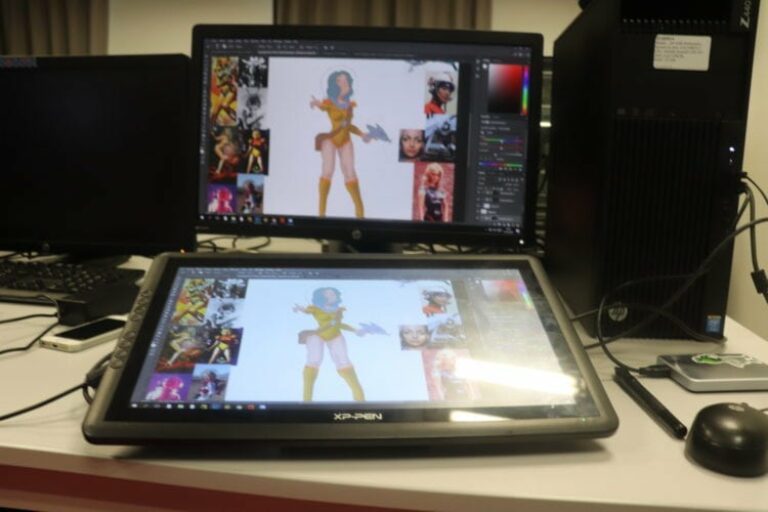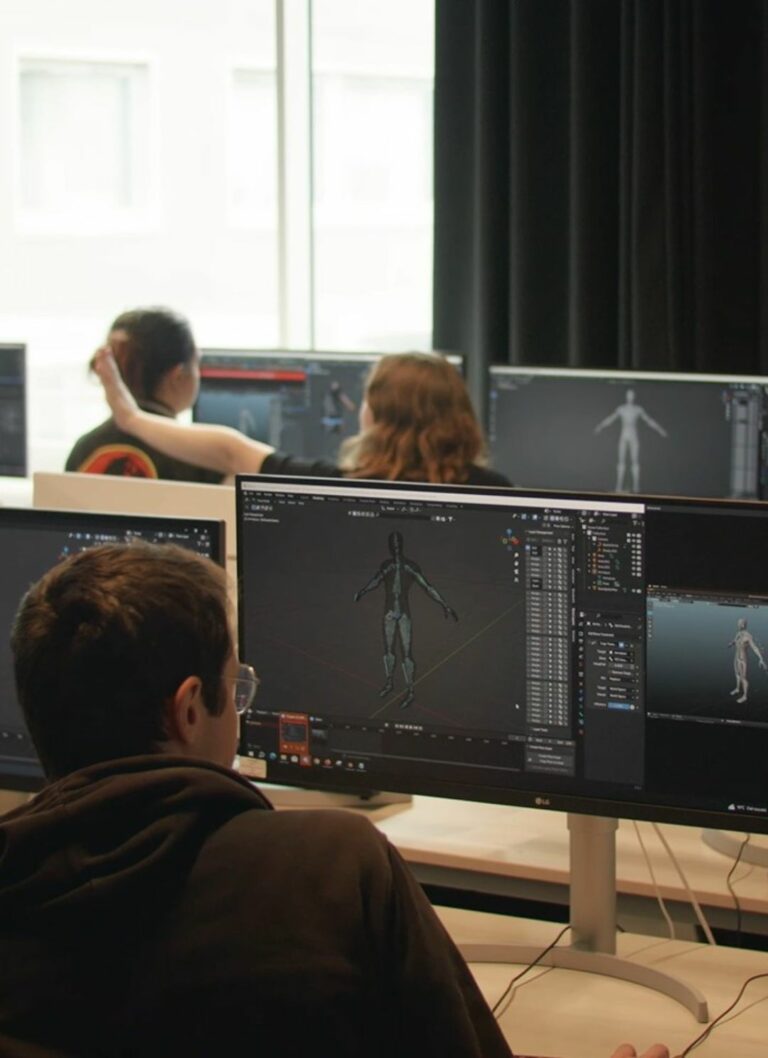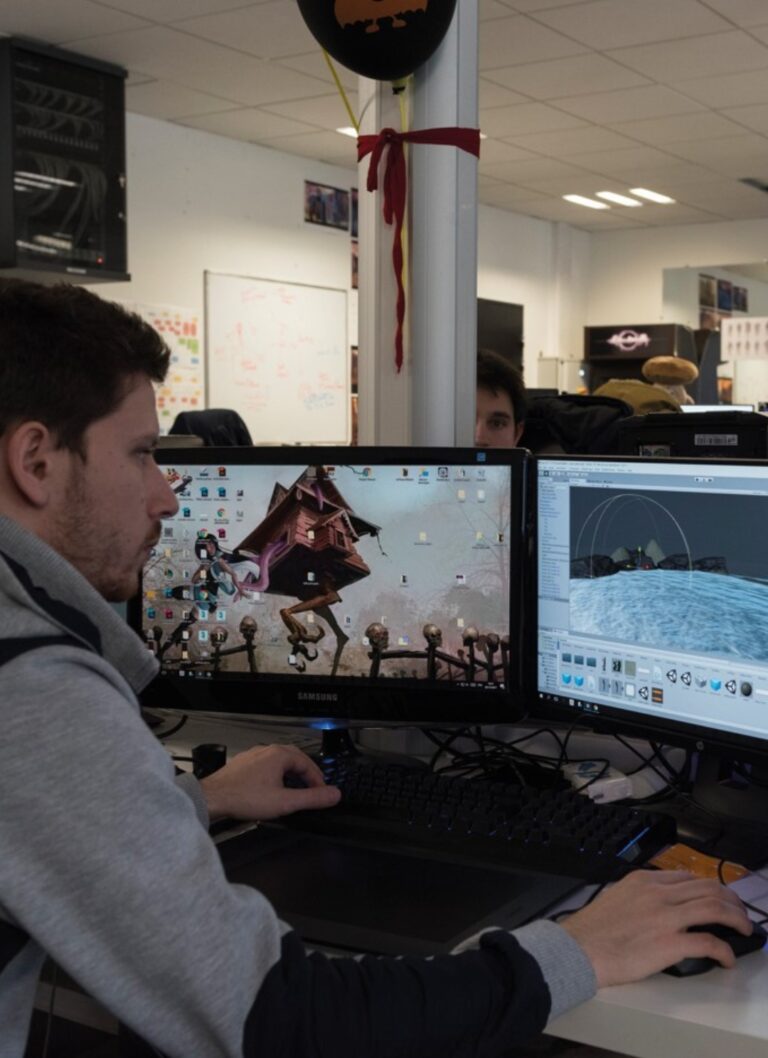
The role of a computer graphics designer
In today’s visually driven world, computer graphics designers play a very important role in shaping how we perceive brands, messages, and information. These creative professionals combine artistic skills with technical expertise to create eye-catching visuals for websites, social media, advertisements, print materials, and more. Whether it’s a sleek website layout or a magazine cover, a graphics designer uses creativity and precision to make content both engaging and easy to understand. But what does this role truly involve, and how can someone become a computer graphics designer?
What does a computer graphics designer do?
The role of a computer graphics designer goes beyond simply creating attractive visuals that is eye catchy to people. Professionals use digital tools to design images, layouts, and graphics that communicate a brand’s message effectively. From designing promotional flyers and social media posts to developing website interfaces and interactive elements, a graphics designer ensures that the visuals resonate with the target audience. For instance, a design intended for children might use bright colors and playful fonts, while a corporate presentation would stick to a more polished and professional style. The ultimate goal is to create designs that not only look good but also serve a clear purpose.
Key akills and tools required
Becoming a successful computer graphics designer requires a mix of creativity, technical skills, and problem-solving abilities. Here are some key skills and tools every designer should master:
Creativity and Artistic Vision
Essential for developing original concepts and crafting visuals that capture attention.
Proficiency in design software
Mastery of tools like Adobe Photoshop, Illustrator, and InDesign for tasks like:
- Image editing
- Layout design
- Vector illustrations
Communication and collaboration
Designers often work closely with clients, so being able to listen, interpret feedback, and communicate ideas clearly is crucial.
Attention to detail
Precision in design ensures that every element, from typography to color choices, aligns with the brand’s identity.
curiosity and adaptability
Staying updated with new trends, tools, and design techniques helps designers stay competitive in a fast-evolving industry.
With these skills, a computer graphics designer can transform ideas into compelling visual content that resonates with the target audience.
How to become a computer graphics designer?
There are several paths to becoming a computer graphics designer, depending on your background and goals. Here are the key steps to enter this creative profession:
Pursue relevant education
While some designers are self-taught, many employers prefer candidates with formal education in graphic design, multimedia arts, or a related field. Programs like the Multimedia Graphic Design Course offer a comprehensive curriculum to help students build essential design skills.
Master design software
Familiarity with industry-standard tools such as Adobe Photoshop, Illustrator, InDesign, and After Effects is crucial. These programs are used to create everything from logos and websites to motion graphics and interactive media.
Build a portfolio
A strong portfolio showcasing a variety of projects is essential for landing a job in the field. Include designs that demonstrate creativity, technical skill, and the ability to adapt to different audiences and platforms.
Gain practical experience
Internships, freelance work, or entry-level design jobs can provide valuable hands-on experience. These opportunities also help designers learn how to work with clients and meet project requirements effectively.
Stay Updated
The design industry evolves rapidly, with new tools and techniques emerging regularly. Following design blogs, taking online courses, and experimenting with new software can keep your skills sharp.
By following these steps, aspiring designers can build a strong foundation and increase their chances of success in the field.
Career paths and growth opportunities
A career of a graphic designer offers a wide range of opportunities across many industries. From digital marketing and publishing to film and video game production, the possibilities are vast. Here’s a look at potential career paths and growth prospects:
Corporate design departments
Many companies hire in-house designers to create marketing materials, presentations, and website visuals.
Advertising and marketing agencies
Graphic designers in these settings work on diverse projects for multiple clients, ranging from branding campaigns to social media graphics.
Publishing and media companies
Designers here may focus on magazine layouts, book covers, or online publications.
Entertainment and gaming industry
Computer graphics designers are essential for creating visual effects, game assets, and promotional content in film, television, and gaming.
Freelancing and entrepreneurship
Many designers choose the flexibility of freelancing, taking on clients across different industries and building their own brand.
Salary expectations
The salary for a computer graphics designer varies based on experience, location, and industry. On average, entry-level designers can expect around €2,300 gross per month, with salaries increasing as they gain more experience and move into senior roles.
Career growth
With experience, designers can move into more senior roles such as:
- Project Manager: managing design projects from concept to delivery.
- Art Director: Leading creative teams and developing design strategies.
- Creative Director: Shaping the visual identity of a brand or overseeing an agency’s creative direction.
Conclusion
A career as a computer graphics designer combines creativity and technology to create impactful visual content. With the right skills and dedication, designers can find exciting opportunities across various industries, from marketing to entertainment. It’s a rewarding profession for anyone with a passion for design and communication.





